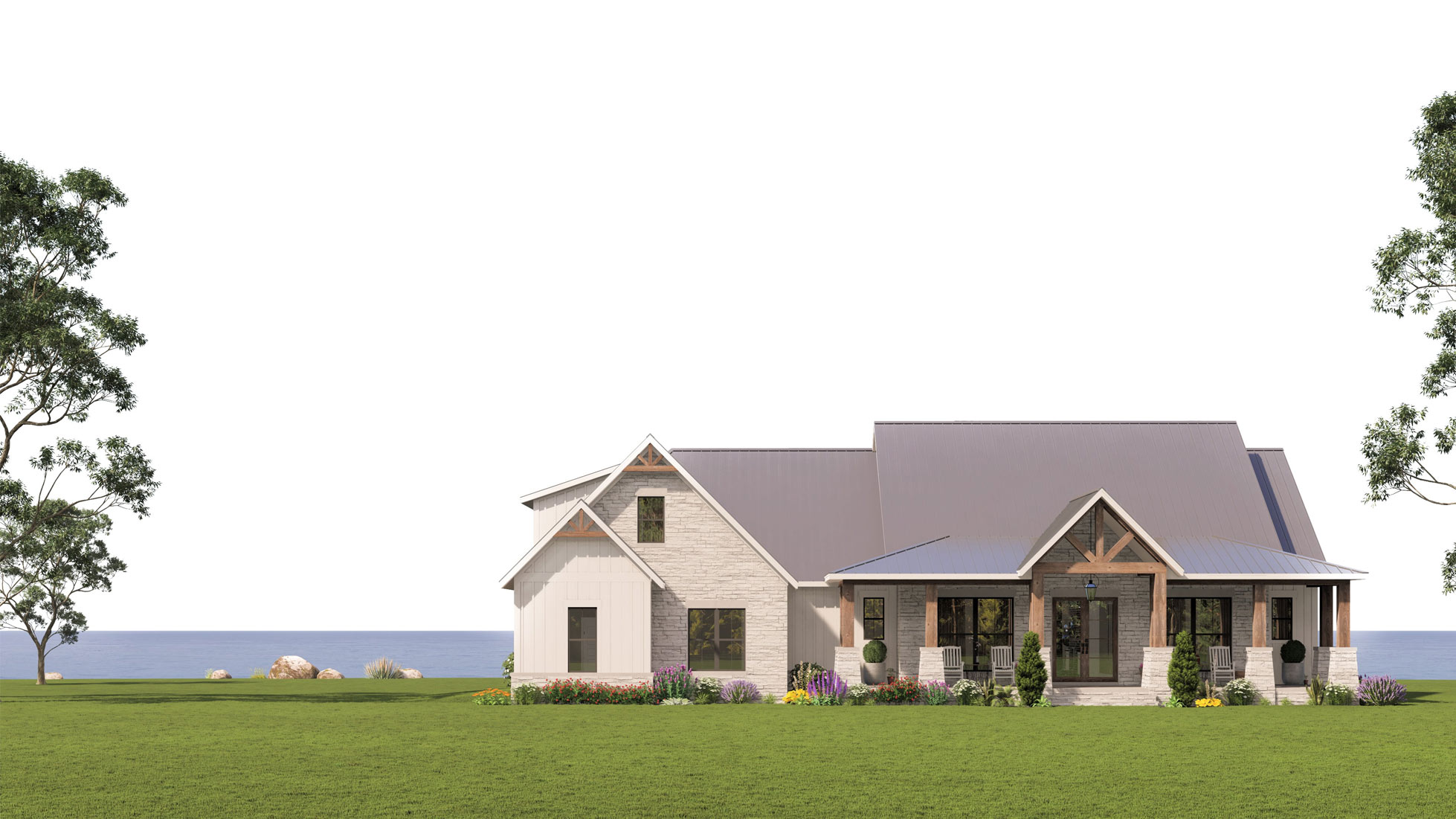Craftsman style house plans showcase a simple design where function and form are at the forefront, and while unpretentious, they still manage to hold your eye and imagination.
These traditional designs celebrate natural materials as a starting point and most often include substantial brick pillars, signature expansive front porches, exposed rafters—perhaps, a low-pitched gable roof—and some of the most spectacular window features. Combined, they create an architectural design with timeless curb appeal.
The interiors of Craftsman style house plans feature built-in cabinetry, nooks and crannies, warming fireplaces, and well-designed spaces for family bonding as well as entertaining, all richly detailed in their aesthetic beauty.
This low-profile, simple home design is one of the most prolific and enduring home styles ever built and highlights life's simple pleasures.
Each Craftsman home is unique, but they all share the foundational philosophy of celebrating handcrafted, natural materials and a harmonious blend of form and function. This enduring style remains popular for its timeless aesthetic and enduring quality.
Craftsman-style homes, a popular architectural style in the United States, are known for their distinct and recognizable features. Emerging in the late 19th and early 20th century, the Craftsman style was a reaction to the Industrial Revolution. It emphasized handiwork over mass production, focusing on simplicity, durability, and functionality. Here are some key elements that typically define a Craftsman house plan:
A hallmark of Craftsman house plans is their low-pitched gable roofs. The gable is the triangular portion of the wall between the edges of intersecting roof pitches. In Craftsman-style homes, the gable roof typically has a less steep pitch than in other architectural styles. This gives the house a more horizontal emphasis, contributing to its grounded and solid appearance.
Craftsman-style homes are also commonly referred to as “Arts and Crafts” homes. This alternative name comes from the Arts and Crafts movement that originated in Britain in the late 19th century and inspired the Craftsman style. The movement emphasized the value of handcrafted artisanship over mass-produced goods, a philosophy that strongly influenced the design principles of Craftsman homes.
Another term often associated with Craftsman-style homes is “Bungalow.” However, while all bungalows can be considered Craftsman-style homes, not all Craftsman homes are bungalows. A bungalow is typically a small, single-story home with a low-pitched roof and a front porch, while Craftsman homes can be more prominent and may have more than one story.
Craftsman-style homes, renowned for their distinctive architectural features and handcrafted details, are found throughout the United States. However, they are particularly prevalent in areas that experienced significant growth during the early 20th century when the Craftsman style was in vogue.
California is a hotbed for this architectural style, with its roots deepening thanks to architects like Greene and Greene. Pasadena, California, is a city renowned for its Craftsman homes, including the famed Gamble House, and such homes are spread across the state from San Diego to San Francisco. Moving up to the Pacific Northwest, Washington, especially Seattle, has a wealth of Craftsman homes. Historic neighborhoods such as Queen Anne and Capitol Hill are filled with great examples of this style.
In the Midwest, Illinois witnessed a surge in Craftsman-style construction during the early 20th century. Cities like Chicago have many Craftsman homes, particularly in older neighborhoods.
Craftsman homes, characterized by their quality craftsmanship and use of natural materials, come in several distinct types. While all Craftsman homes share some common features, such as low-pitched roofs and built-in furniture, the specific style can vary significantly based on factors such as the size of the home, its layout, and regional influences. Here are some of the most common types of Craftsman house plans:
Remember, these are general categories of Craftsman house plans, and many of these homes will not fit neatly into just one. A single Craftsman house might combine elements from several different types, creating a unique style that’s all its own.

